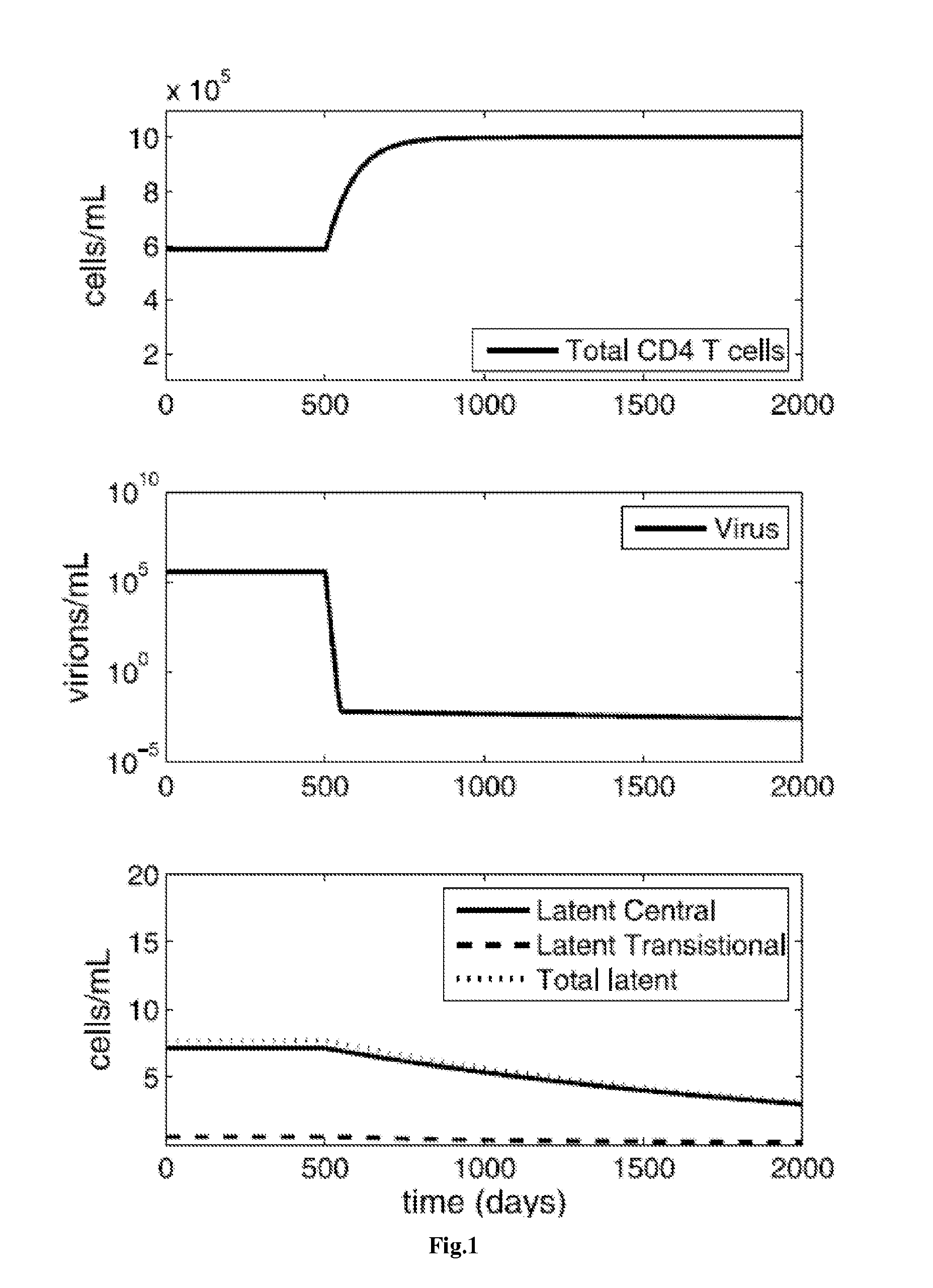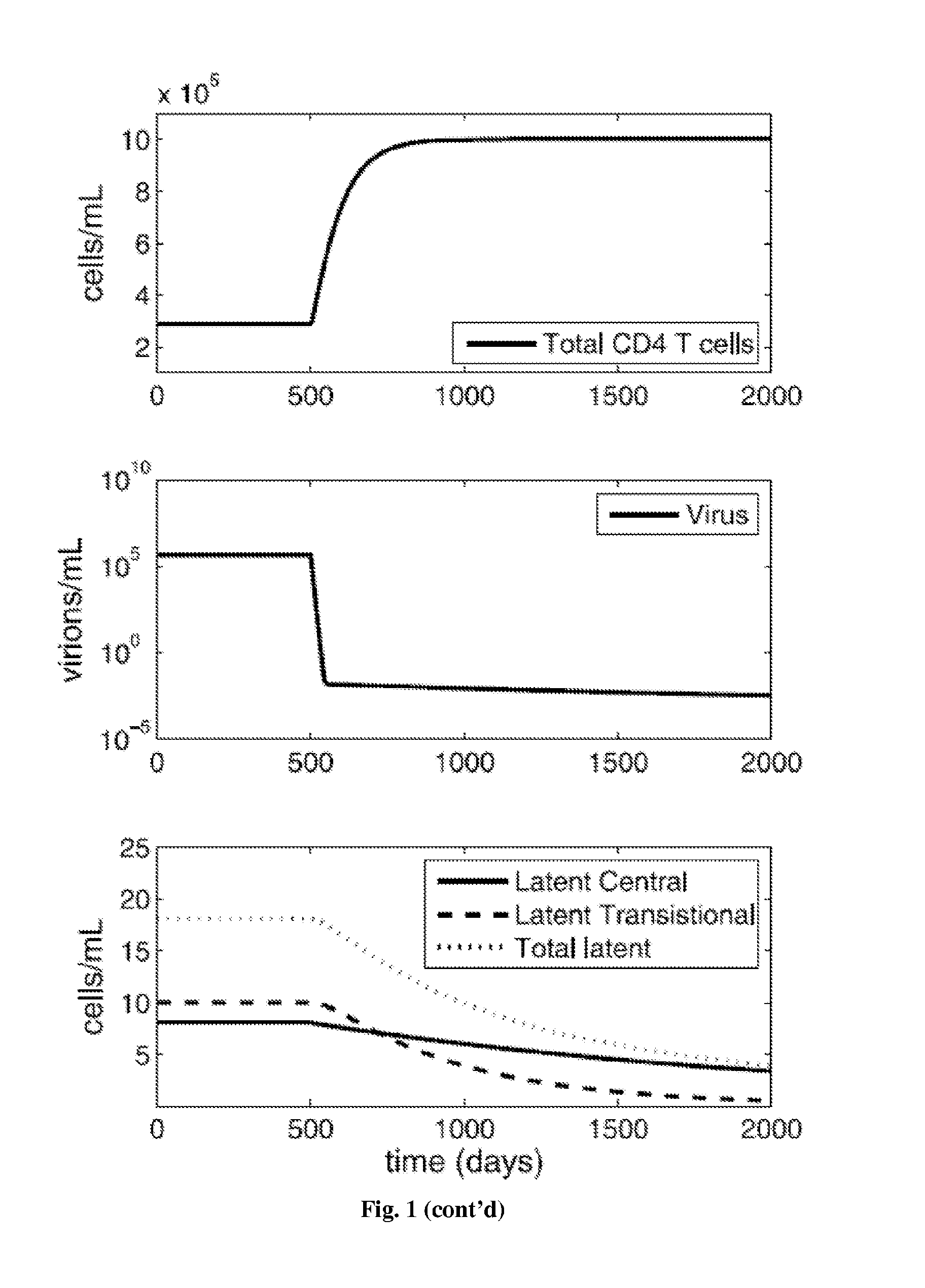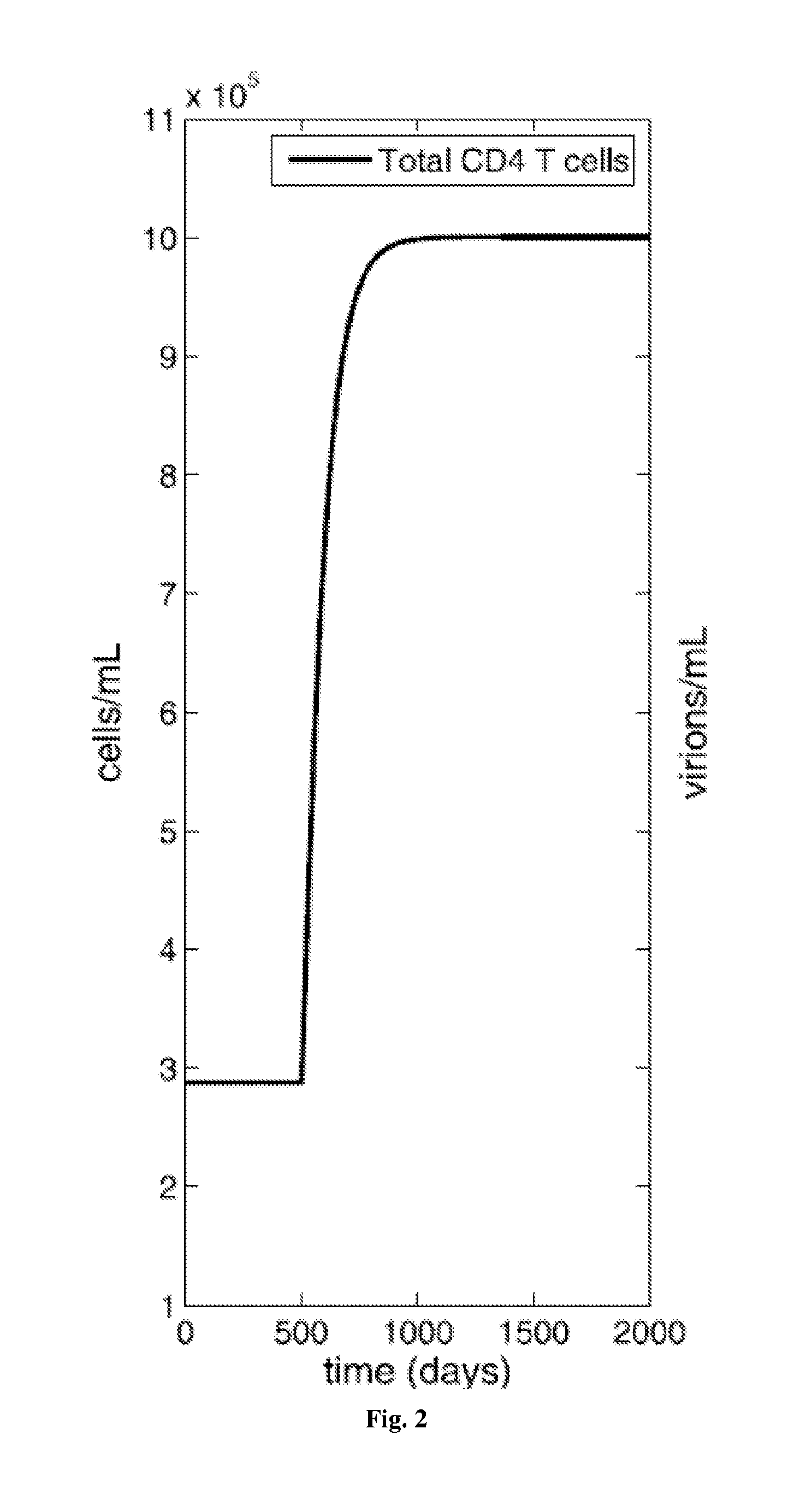Treatment of latent HIV infection
a technology of latent hiv infection and treatment, applied in the field of hiv1 infection treatment, to achieve the effect of reducing the number of patients with hiv-1 and encouragering viral production
- Summary
- Abstract
- Description
- Claims
- Application Information
AI Technical Summary
Benefits of technology
Problems solved by technology
Method used
Image
Examples
example 1
Mathematical Model of Combined IAT / HAART
[0308]While antiretroviral drugs can drive HIV-1 to undetectably low levels in the blood, eradication is hindered by the persistence of long-lived, latently infected memory CD4 T cells. Immune activation therapy aims to eliminate this latent reservoir by reactivating these memory cells, exposing them to removal by the immune system and the cytotoxic effects of active infection.
[0309]A mathematical model is described that investigates the use of immune activation strategies while limiting virus and latent class rebound. This model considers infection of two memory classes, central and transitional CD4 T cells, and the role that general immune activation therapy has on their elimination. Further, the model incorporates ways to control viral rebound by blocking activated cell proliferation through anti-proliferation therapy. Using the model, control of latent infection is described, which subsequently can lead to the long-term control of HIV-1 in...
example 2
Determining the Effectiveness of a Given Radioimmunotherapy Treatment
[0437]The following prophetic example shows ways to determine whether a given radioimmunotherapy will be effective for use in the methods described herein.
[0438]Materials and Methods
[0439]Antibodies.
[0440]Goat polyclonal antibody (Ab) against gp-120 (IgG1) can be purchased from Biodesign International (Saco, Me.). Murine 18B7 monoclonal antibody (mAb) (IgG1) specific for cryptococcal polysaccharide (Casadevall et al., 1998) can be used as an isotype-matching control. As described in U.S. Pat. No. 5,731,189, lymphoblastoid cell line 126-6 producing human monoclonal antibodies directed against gp41 is deposited with the American Type Culture Collection (10801 University Boulevard, Manassas, Va. 21110-2209) on Feb. 24, 1989 and received ATCC Accession number CRL 10037. Human mAb 1418 (IgG1) to parvovirus Bl 9 (Gigler et al., 1999) can be used as an irrelevant control for mAb 246D, and human mAb 447 (IgG3) to the V3 lo...
PUM
| Property | Measurement | Unit |
|---|---|---|
| time | aaaaa | aaaaa |
| time | aaaaa | aaaaa |
| time | aaaaa | aaaaa |
Abstract
Description
Claims
Application Information
 Login to View More
Login to View More - R&D
- Intellectual Property
- Life Sciences
- Materials
- Tech Scout
- Unparalleled Data Quality
- Higher Quality Content
- 60% Fewer Hallucinations
Browse by: Latest US Patents, China's latest patents, Technical Efficacy Thesaurus, Application Domain, Technology Topic, Popular Technical Reports.
© 2025 PatSnap. All rights reserved.Legal|Privacy policy|Modern Slavery Act Transparency Statement|Sitemap|About US| Contact US: help@patsnap.com



